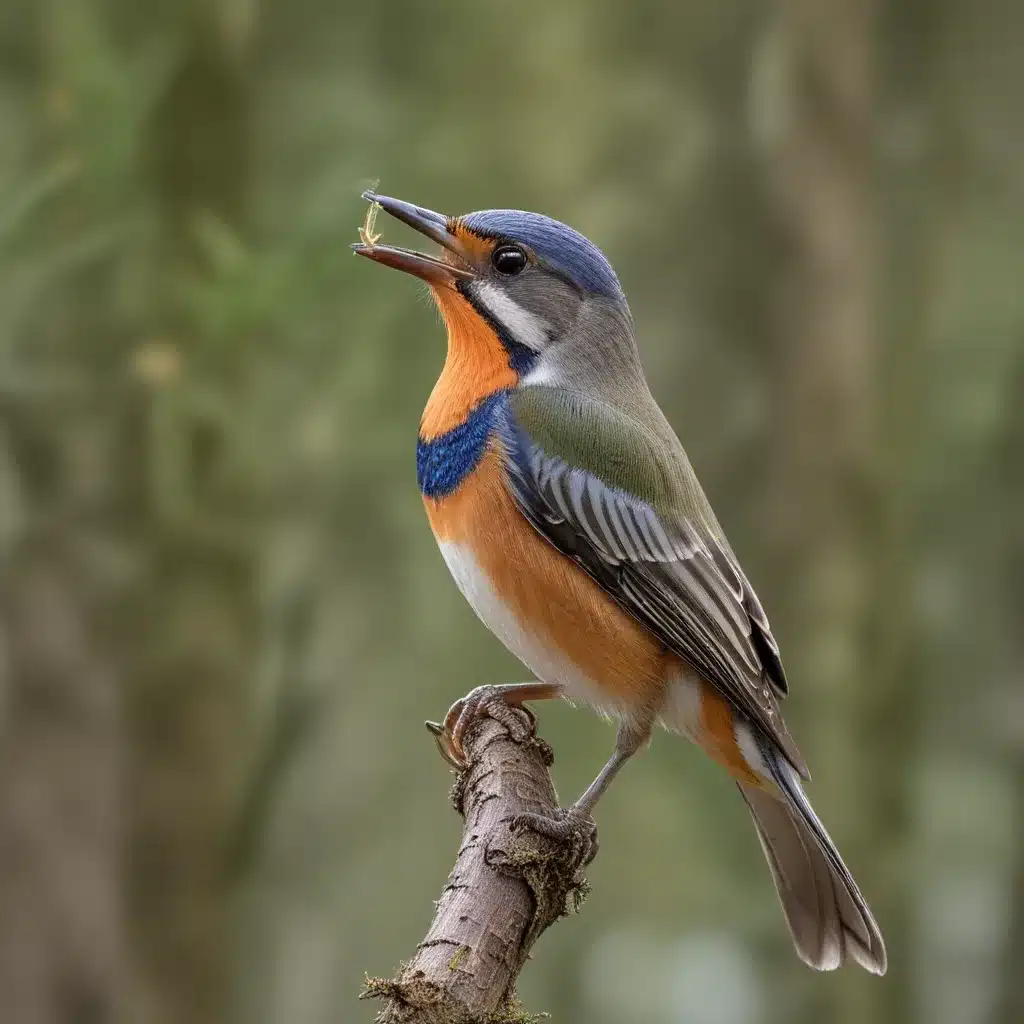
Avian Vocalization: Exploring the Language of Birds
The world of avian communication is a rich tapestry of captivating sounds, intricate vocalizations, and complex signaling systems. As an experienced avian caretaker and expert in bird species, I’m excited to guide you on a journey through the fascinating realm of avian vocalization. From the melodious songs of songbirds to the alarm calls that warn of impending danger, the language of birds is a testament to their remarkable cognitive and social abilities.
Bird Communication Systems
At the heart of avian communication lies a diverse repertoire of vocalizations. Birds have evolved an impressive array of calls, ranging from simple chirps to elaborate, multi-note songs. These vocal expressions serve a multitude of functions, including establishing territories, attracting mates, maintaining social cohesion, and conveying vital information about their environment.
But the communication of birds extends beyond the realm of sound. Many avian species also employ non-vocal signaling mechanisms, such as visual displays, body postures, and even chemical cues. These various forms of communication work in tandem, allowing birds to convey a wide range of messages to their conspecifics and other species within their ecosystems.
The Physiology of Avian Vocalization
Underlying the remarkable vocal abilities of birds is their unique anatomical structure. At the center of this is the syrinx, a specialized organ located at the base of the trachea. Unlike the human larynx, the syrinx is equipped with a pair of vibrating membranes that can be precisely controlled by a complex network of muscles. This intricate setup enables birds to produce a diverse array of sounds, from the rich, melodic trills of songbirds to the harsh, grating caws of corvids.
But the production of avian vocalizations is not solely a physical feat. The neurological control of these vocalizations is equally complex, involving various regions of the avian brain. Researchers have identified specialized neural pathways and centers responsible for the initiation, coordination, and learning of bird songs and calls. This interplay between physiology and neurology is what gives rise to the remarkable vocal abilities of our feathered friends.
Acoustic Properties of Bird Calls and Songs
The acoustic characteristics of avian vocalizations are as diverse as the birds themselves. Some species excel at producing high-frequency, high-amplitude calls that can carry over long distances, while others specialize in lower-pitched, more melodic songs that create a soothing ambiance within their habitats.
Temporal patterns in avian vocalizations are also highly variable. Some birds, like the renowned mockingbird, are known for their ability to produce long, complex songs with rapid-fire sequences of notes. In contrast, other species utilize simple, repetitive calls to convey their messages. Understanding these acoustic properties is crucial for deciphering the meaning and function of bird vocalizations.
Behavioral Functions of Avian Vocalization
The behavioral functions of avian vocalization are as diverse as the birds themselves. For many species, the primary purpose of their songs and calls is to establish and defend territories. Male birds, in particular, often use their vocal prowess to assert their dominance, ward off rivals, and attract potential mates.
Parent-offspring communication is another essential aspect of avian vocalization. Chicks employ begging calls to signal their hunger and elicit feeding responses from their attentive parents. Conversely, adult birds use a variety of calls to maintain contact with their offspring, coordinate group movements, and even warn of impending danger.
The use of alarm calls is a particularly fascinating aspect of avian communication. When birds detect a potential threat, they often emit loud, distinctive calls that alert their flock mates to the presence of a predator. These alarm calls can vary in intensity and urgency, conveying crucial information about the nature and proximity of the threat.
Evolutionary Perspectives on Avian Communication
The evolution of avian communication systems is a captivating area of study, revealing the intricate interplay between biology, ecology, and social dynamics. Phylogenetic analyses have shed light on the diverse vocal repertoires of different bird species, suggesting that the complexity of their vocalizations may be influenced by factors such as habitat structure, predation pressures, and social organization.
Moreover, the capacity for vocal learning, a trait shared by both birds and humans, has been a subject of intense research. The ability of certain bird species to acquire and modify their songs through social interaction and exposure to their environment has intrigued scientists, offering valuable insights into the origins and development of communication in the animal kingdom.
Applications of Avian Vocalization Research
The study of avian vocalization has far-reaching implications, extending beyond the realms of pure scientific inquiry. In the field of bioacoustic monitoring, researchers utilize the unique acoustic signatures of bird calls and songs to track population dynamics, assess habitat health, and even detect the presence of elusive or endangered species.
Furthermore, the insights gleaned from avian communication research have contributed to our understanding of animal cognition and learning. Comparative studies between birds and other intelligent species, such as primates and cetaceans, have revealed striking similarities in their ability to process, interpret, and respond to complex vocal signals.
As an experienced avian caretaker, I’m continually amazed by the captivating world of bird communication. From the soothing melodies of songbirds to the urgent alarm calls that pierce the air, the language of our feathered friends is a testament to their remarkable adaptability, social intelligence, and the deep connections they share with their environments. By exploring the intricate facets of avian vocalization, we gain a deeper appreciation for the richness and diversity of the avian kingdom, and are inspired to foster greater stewardship and conservation of these remarkable creatures.


